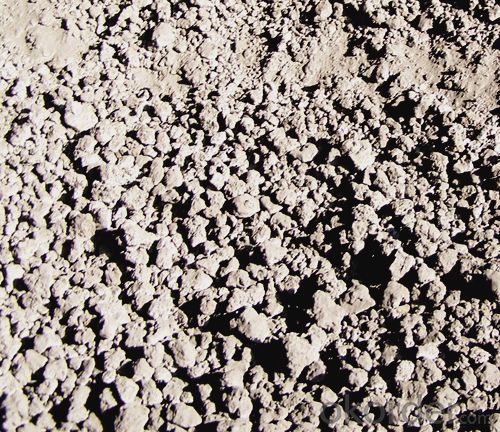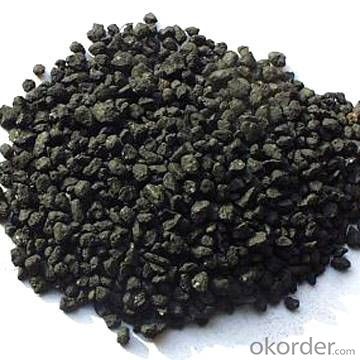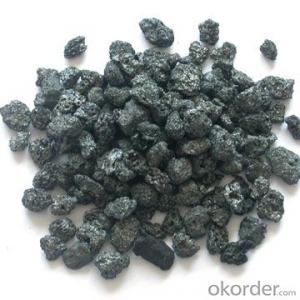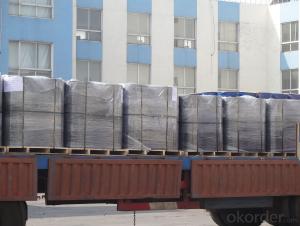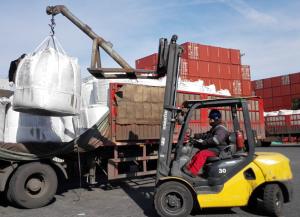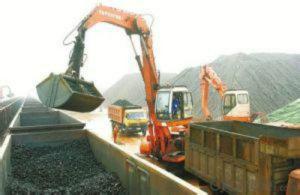Low sulfur Calcined Petroleum Coke of CNBM in China
- Loading Port:
- Tianjin
- Payment Terms:
- TT OR LC
- Min Order Qty:
- 1 m.t.
- Supply Capability:
- 10000000 m.t./month
OKorder Service Pledge
OKorder Financial Service
You Might Also Like
1.Structure of Calcined Petroleum Coke Description
Calcined Petroleum Coke is made from raw petroleum coke,which is calcined in furnace at a high temperature(1200-1300℃).CPC/Calcined Petroleum Coke is widely used in steelmaking,castings manufacture and other metallurgical industry as a kind of recarburizer because of its high fixed carbon content,low sulfur content and high absorb rate.Besides,it is also a best kind of raw materials for producing artifical graphite(GPC/Graphitized Petroleum Coke) under the graphitizing temperature(2800℃).
2.Main Features of the Calcined Petroleum Coke
High-purity graphitized petroleum coke is made from high quality petroleum coke under a temperature of 2,500-3,500°C. As a high-purity carbon material, it has characteristics of high fixed carbon content, low sulfur, low ash, low porosity etc.It can be used as carbon raiser (Recarburizer) to produce high quality steel,cast iron and alloy.It can also be used in plastic and rubber as an additive.
3. Calcined Petroleum Coke Images
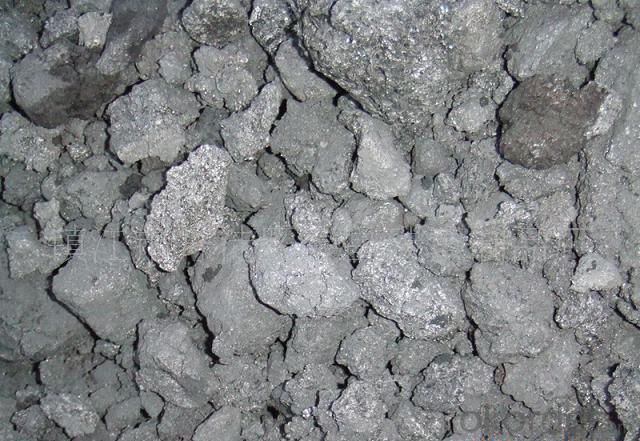
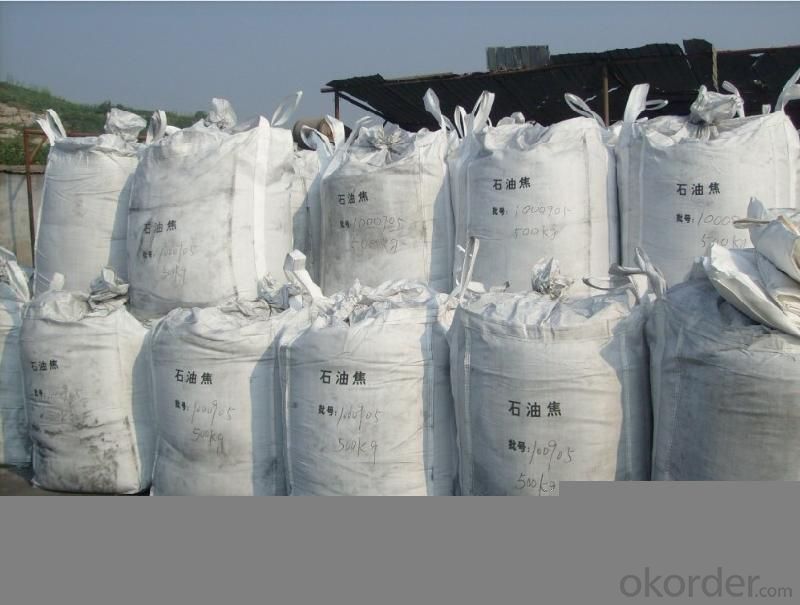
4. Calcined Petroleum Coke Specification
classify | Ash ,% (≤) | volatiles,% (≤) | water,% (≤) | sulfur,% (≤) |
High sulfur coke | 0.8 | 0.5 | 0.3 | 0.8 |
Mid Sulfur coke | 0.5 | 0.5 | 0.3 | 0.5 |
Low sulfur coke | 0.3 | 0.5 | 0.3 | 0.3 |
5.FAQ of Calcined Petroleum Coke
1). Q: Are you a factory or trading company?
A: We are a factory.
2). Q: Where is your factory located? How can I visit there?
A: Our factory is located in ShanXi, HeNan, China. You are warmly welcomed to visit us!
3). Q: How can I get some samples?
A: Please connect me for samples
4). Q: Can the price be cheaper?
A: Of course, you will be offered a good discount for big amount.
- Q: How does carbon contribute to the structure of DNA?
- The structure of DNA relies heavily on carbon, as it plays a critical role in its composition. Carbon is a crucial element in the formation of the sugar-phosphate backbone, which is an integral part of the DNA molecule. This backbone consists of alternating sugar and phosphate molecules, with the sugar molecule being deoxyribose in DNA. Deoxyribose sugar contains five carbon atoms, making carbon a significant component in its structure. These carbon atoms provide stability and rigidity to the backbone, ensuring the overall structure of the DNA molecule remains intact. Additionally, carbon also contributes to the formation of the nitrogenous bases that form the ladder-like structure of DNA. There are four nitrogenous bases in DNA: adenine (A), guanine (G), cytosine (C), and thymine (T). Carbon atoms are present in the structure of each of these bases, giving them their distinct chemical properties. Various functional groups containing carbon, such as amino and keto groups, actively participate in hydrogen bonding and stacking interactions that determine the base pairing within the DNA double helix. To summarize, carbon is an indispensable element in the structure of DNA. It not only provides stability and rigidity to the sugar-phosphate backbone but also plays a crucial role in the formation of the nitrogenous bases. The unique properties of carbon enable DNA to maintain its double helix structure and facilitate the accurate transmission of genetic information.
- Q: What is the role of carbon in the corrosion of metals?
- The role of carbon in the corrosion of metals is primarily as a catalyst or facilitator for corrosion processes. Carbon, in the form of carbon dioxide (CO2) or carbonic acid (H2CO3), can react with moisture in the atmosphere to form carbonic acid, which is a weak acid. This weak acid can then react with metal surfaces, initiating the corrosion process. When carbonic acid comes into contact with a metal, it can cause a chemical reaction known as carbonic acid corrosion or acid attack. This reaction involves the dissolution of metal ions into solution and the formation of metal oxide or metal hydroxide products. The presence of carbon in the form of carbon dioxide or carbonic acid can accelerate the corrosion rate by providing an electrolyte and lowering the pH of the environment, making it more corrosive. Furthermore, carbon can also participate in galvanic corrosion, which occurs when two dissimilar metals are in contact with an electrolyte. Carbon, in the form of graphite, can act as a conductor, allowing the flow of electrons between the two metals. This can create an electrochemical cell, leading to accelerated corrosion of the less noble metal. In addition to these direct roles, carbon can indirectly contribute to metal corrosion through the formation of corrosion products such as carbonates or bicarbonates. These compounds can accumulate on the metal surface, leading to the formation of a protective or non-protective corrosion layer. Depending on the specific conditions, this layer can either hinder or enhance the corrosion process. Overall, carbon plays a significant role in the corrosion of metals by acting as a catalyst, facilitating the formation of corrosive environments, participating in galvanic corrosion, and influencing the formation of corrosion products. Understanding the role of carbon is crucial in developing effective corrosion prevention and mitigation strategies.
- Q: What is the greenhouse effect?
- The greenhouse effect is a natural process that occurs when certain gases in the Earth's atmosphere trap heat from the sun and prevent it from escaping back into space. These gases, such as carbon dioxide (CO2), methane (CH4), and water vapor, act like a blanket, allowing sunlight to pass through but trapping the heat that is radiated back from the Earth's surface. This process is essential for the Earth's survival as it helps to maintain a relatively stable and habitable temperature range. Without the greenhouse effect, the Earth's average temperature would be much colder, making it uninhabitable for most life forms. However, human activities, such as burning fossil fuels, deforestation, and industrial processes, have significantly increased the concentration of greenhouse gases in the atmosphere. This excess of greenhouse gases intensifies the greenhouse effect, leading to a phenomenon known as global warming. Global warming refers to the gradual increase in the Earth's average temperature, primarily caused by human-induced greenhouse gas emissions. This rise in temperature has far-reaching consequences, including melting ice caps, rising sea levels, extreme weather events, and disruption of ecosystems. The greenhouse effect itself is a natural and necessary process, but the enhanced greenhouse effect caused by human activities is contributing to climate change. Therefore, it is crucial to reduce greenhouse gas emissions and adopt sustainable practices to mitigate the adverse effects of global warming.
- Q: What is carbon fiber reinforced plastic?
- Carbon fiber reinforced plastic (CFRP) is a composite material made by combining carbon fibers with a polymer matrix, typically epoxy resin. It is known for its exceptional strength-to-weight ratio, making it a lightweight alternative to traditional materials like steel and aluminum. The carbon fibers provide the material with high tensile strength and stiffness, while the polymer matrix helps to distribute the load and provide durability. The manufacturing process of CFRP involves layering carbon fiber sheets or fabrics and impregnating them with the polymer resin. This combination is then cured under high temperature and pressure to create a solid and rigid structure. The resulting material is incredibly strong, yet significantly lighter than other materials of similar strength, such as steel. CFRP finds numerous applications across various industries due to its unique properties. It is commonly used in aerospace and automotive sectors to reduce the weight of components and improve fuel efficiency. Additionally, it is used in sports equipment, such as bicycles, tennis rackets, and golf clubs, as it allows for better performance and maneuverability. CFRP is also utilized in construction, where its high strength and resistance to corrosion make it suitable for reinforcing structures like bridges and buildings. Overall, carbon fiber reinforced plastic is a versatile and high-performance material that combines the strength of carbon fibers with the flexibility of a polymer matrix. Its lightweight nature and exceptional mechanical properties make it a popular choice across industries where strength, weight reduction, and durability are crucial factors.
- Q: What are the benefits of carbon-neutral technologies?
- Carbon-neutral technologies have numerous benefits that make them a vital solution in combating climate change and creating a sustainable future. Firstly, these technologies help to reduce greenhouse gas emissions, particularly carbon dioxide, which is the primary contributor to global warming. By transitioning to carbon-neutral technologies, we can significantly decrease our carbon footprint and mitigate the harmful effects of climate change. Secondly, carbon-neutral technologies promote energy efficiency and resource conservation. Many of these technologies, such as renewable energy sources like solar and wind power, harness natural resources that are infinite and readily available. This reduces our reliance on finite fossil fuels, which not only helps to protect the environment but also reduces the volatility of energy prices. Furthermore, embracing carbon-neutral technologies can lead to improved air quality and public health. Traditional energy sources like coal and oil contribute to air pollution and have detrimental health effects on humans, such as respiratory issues and cardiovascular diseases. By transitioning to cleaner technologies, we can reduce air pollution and improve the quality of life for individuals and communities. In addition, carbon-neutral technologies can stimulate economic growth and create new job opportunities. The development, installation, and maintenance of renewable energy infrastructure require skilled workers, leading to job creation and economic development. This transition can also reduce dependency on imported energy sources, leading to greater energy independence and national security. Lastly, by adopting carbon-neutral technologies, we can demonstrate global leadership and contribute to international efforts to combat climate change. Countries that embrace these technologies become role models for others and encourage global cooperation in reducing greenhouse gas emissions. In conclusion, the benefits of carbon-neutral technologies are vast and multidimensional. They not only help mitigate climate change and reduce greenhouse gas emissions but also promote energy efficiency, improve air quality, stimulate economic growth, and contribute to global efforts in creating a sustainable future.
- Q: What is the carbon footprint of different activities?
- The carbon footprint of different activities refers to the amount of greenhouse gas emissions, particularly carbon dioxide (CO2), that are released into the atmosphere as a result of carrying out those activities. It is a measure of the impact that these activities have on climate change. Various activities contribute to our carbon footprint, including transportation, energy use, food production, and waste management. The carbon footprint of each activity can vary significantly depending on factors such as the type of energy sources used, the efficiency of technologies involved, and individual choices. Transportation is a major contributor to carbon emissions, with cars, planes, and ships being the primary sources. The use of fossil fuels in these modes of transportation releases CO2 into the atmosphere. The type of vehicle, fuel efficiency, and distance traveled all play a role in determining the carbon footprint of transportation. Energy use is another significant contributor, particularly in the form of electricity generation. Burning fossil fuels like coal and natural gas to produce electricity releases CO2. However, renewable energy sources like wind, solar, and hydroelectric power have a lower carbon footprint as they do not emit greenhouse gases during operation. Food production is often overlooked but has a substantial carbon footprint. The agricultural practices involved in growing, processing, packaging, and transporting food contribute to emissions. Additionally, livestock farming, particularly beef and lamb, produces significant amounts of methane, a potent greenhouse gas. Waste management also contributes to carbon emissions, primarily through the decomposition of organic waste in landfills. As organic waste breaks down, it produces methane. Proper waste management techniques, such as composting and anaerobic digestion, can help reduce these emissions. It is important to note that the carbon footprint of activities can be reduced through various measures. Adopting energy-efficient technologies, using public transportation or carpooling, choosing renewable energy sources, eating a more sustainable diet, and practicing proper waste management are all ways to minimize our carbon footprint. Understanding the carbon footprint of different activities allows individuals, businesses, and governments to make informed decisions and take necessary actions to mitigate climate change. By reducing our carbon footprint, we can contribute to a more sustainable and environmentally-friendly future.
- Q: Who is the high carbon content of stainless steel and ordinary steel?
- 1 floor is not entirely right! Stainless steel without zinc, the latter two elements are necessary.One: carbon steel content is usually divided into: 0--0.25%, low carbon steel;0.25--0.55%, medium carbon steel - commonly used 45# steel>0.60%, high carbon steel - - do knives
- Q: What is carbon nanophotonics?
- The study and manipulation of light at the nanoscale using carbon-based materials is known as carbon nanophotonics. This branch of science and technology integrates carbon nanotubes, graphene, and diamond nanoparticles with photonics to develop new optical devices and systems. Carbon-based nanomaterials possess exceptional electrical conductivity, high mechanical strength, and excellent optical properties, making them ideal for nanophotonics applications. These materials can confine and manipulate light at the nanoscale, enabling the miniaturization of optical components and enhancing light-matter interactions. Carbon nanophotonics has vast potential across various fields. Telecommunications, for instance, can benefit from high-speed and compact photonic devices developed using carbon nanomaterials for efficient data transmission. In the field of sensing, highly sensitive and selective sensors can be developed using carbon nanophotonics to detect different molecules and substances. Furthermore, carbon nanomaterials can enhance the efficiency of solar cells and other photovoltaic devices, contributing to advancements in energy harvesting. In summary, carbon nanophotonics is a rapidly evolving field that combines carbon-based nanomaterials with photonics to create innovative optical technologies. By harnessing the power of light at the nanoscale, this field has the potential to revolutionize industries and drive advancements in science and technology.
- Q: What are the uses of carbon black?
- Carbon black is primarily used as a reinforcing filler in tires and other rubber products to improve their durability and strength. Additionally, it is widely employed as a pigment in inks, coatings, and plastics due to its ability to provide color and UV protection. Carbon black also finds applications in batteries, electrodes, conductive materials, and as a catalyst support in chemical reactions.
- Q: How does carbon impact the availability of renewable energy sources?
- Carbon impacts the availability of renewable energy sources in several ways. Firstly, carbon emissions from fossil fuel combustion contribute to climate change, which can have detrimental effects on the generation of renewable energy. For instance, rising temperatures and changing weather patterns can reduce the efficiency of solar panels and wind turbines. Secondly, the reliance on carbon-intensive energy sources limits the investment and development of renewable energy technologies. By transitioning to cleaner energy sources, such as solar, wind, and hydroelectric power, we can reduce carbon emissions and enhance the availability and viability of renewable energy options.
Send your message to us
Low sulfur Calcined Petroleum Coke of CNBM in China
- Loading Port:
- Tianjin
- Payment Terms:
- TT OR LC
- Min Order Qty:
- 1 m.t.
- Supply Capability:
- 10000000 m.t./month
OKorder Service Pledge
OKorder Financial Service
Similar products
Hot products
Hot Searches



